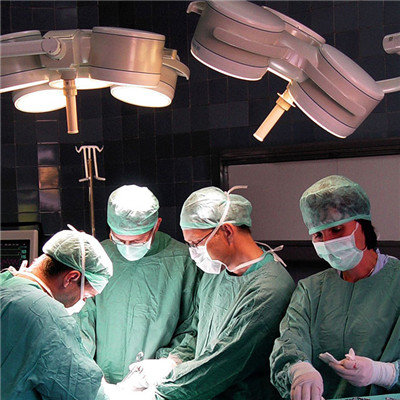Surgical anesthesia symptoms?
summary
Anesthesia is the temporary inhibition of the central nervous system when anesthetics are inhaled through the respiratory tract, injected intravenously or intramuscularly into the body. The clinical manifestations are loss of consciousness, loss of general pain, amnesia, reflex inhibition and skeletal muscle relaxation. The degree of inhibition on the central nervous system is related to the concentration of drugs in the blood, and can be controlled and regulated. This inhibition is completely reversible. When the drug is metabolized or excreted from the body, the patient's consciousness and various reflexes gradually recover. So what are the symptoms of surgical anesthesia? Let's talk about it.
Surgical anesthesia symptoms?
General anesthesia refers to the process that anesthetics enter the body through inhalation, intravenous, intramuscular injection or rectal perfusion, so that the central nervous system is inhibited, resulting in the loss of consciousness of patients without pain. This kind of anesthesia is commonly known as "sleeping state". It is characterized by the loss of consciousness, muscle relaxation and no pain. The most commonly used general anesthesia method is endotracheal intubation general anesthesia, which is characterized by the use of intravenous anesthetics or inhalation anesthetics to produce general anesthesia. Endotracheal intubation and mechanical assisted breathing are needed during the operation.

Tracheal intubation is the process of general anesthesia. This process includes anesthesia induction, anesthesia maintenance and anesthesia recovery. The so-called anesthesia induction, is to let people from awake to sleep. After the patients entered the operating room, the nurse opened the venous access (i.e. acupuncture infusion), the anesthesiologist connected the ECG, blood pressure, oxygen saturation and other monitoring, and the mask inhaled oxygen. Then the anesthesiologist can start induction. Anesthesiologists will give patients intravenous injection of general anesthetics or inhalation of anesthetic gas, and the patients will lose consciousness 3-5 minutes after administration, and they will be awake and go to sleep. Under general anesthesia, due to unconsciousness and general muscle relaxation, the patient loses the power of breathing, and spontaneous breathing usually disappears. Therefore, after the patient enters the general anesthesia state, the anesthesiologist will carry out endotracheal intubation operation, that is, with the assistance of intubation instruments such as laryngoscope, a endotracheal tube will be inserted into the patient's trachea through the patient's mouth or nose, The other end of the endotracheal tube is connected with an anesthesia machine, and the anesthesia machine delivers oxygen to the patient through the endotracheal tube to help the patient breathe.

After that, the anesthesiologist will continue to inhale anesthetic gas to the patient through the anesthesia machine, or continue to infuse narcotic drugs through the intravenous pathway, so that the patient will continue to be in the state of anesthesia. At this point, the operation can begin. The duration of anesthesia depends on the duration of operation. The operation time is long, the anesthesia maintenance time is long; The operation time is short and the anesthesia maintenance time is short. When the operation is successfully completed, the anesthesiologist will stop the use of narcotic drugs, and the patient will enter the anesthesia recovery period. With the metabolic excretion of anesthetics in patients, the concentration of anesthetics gradually decreased. When the concentration of anesthetics is reduced to a certain extent, the patient can resume spontaneous breathing, and his consciousness will be clear. At this time, the anesthesiologist will pull out the endotracheal tube, continue to inhale oxygen to the patient's mask, and inhale oral secretions. When the patient's spontaneous breathing recovery is good, consciousness is fully awake, recognition ability is good, and vital signs are stable, he can return to the ward after reaching the standard of anesthesia recovery.

matters needing attention
In addition to the criteria and norms of anesthesia, we will also make decisions after risk assessment according to the priorities of surgery. For example, in a case of pediatric hernia surgery combined with upper respiratory tract infection, if it is a reducible hernia, we suggest that surgery should be performed after the upper sense is cured. If it is incarcerated hernia, we must cooperate with the surgery to open the operation as soon as possible.















